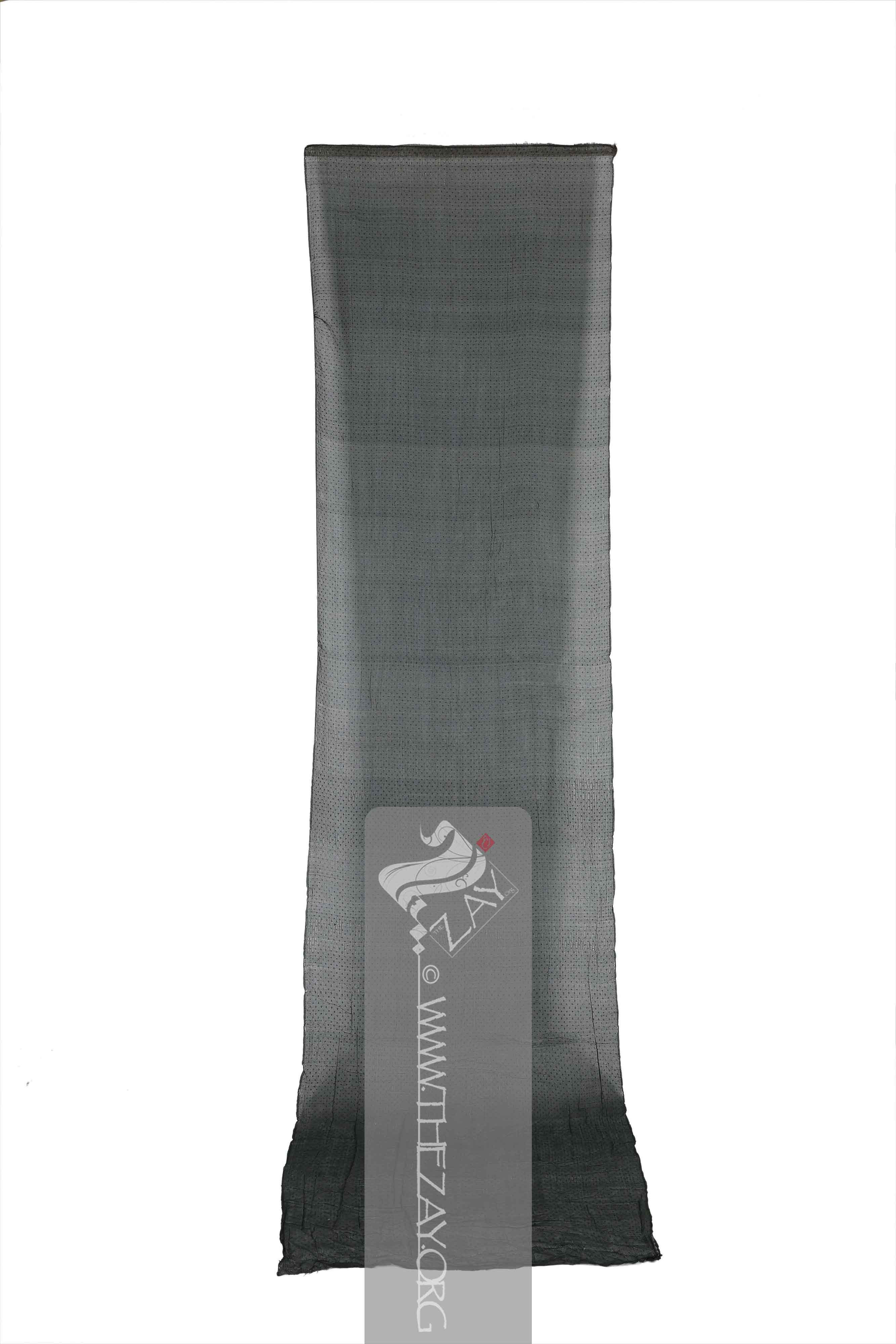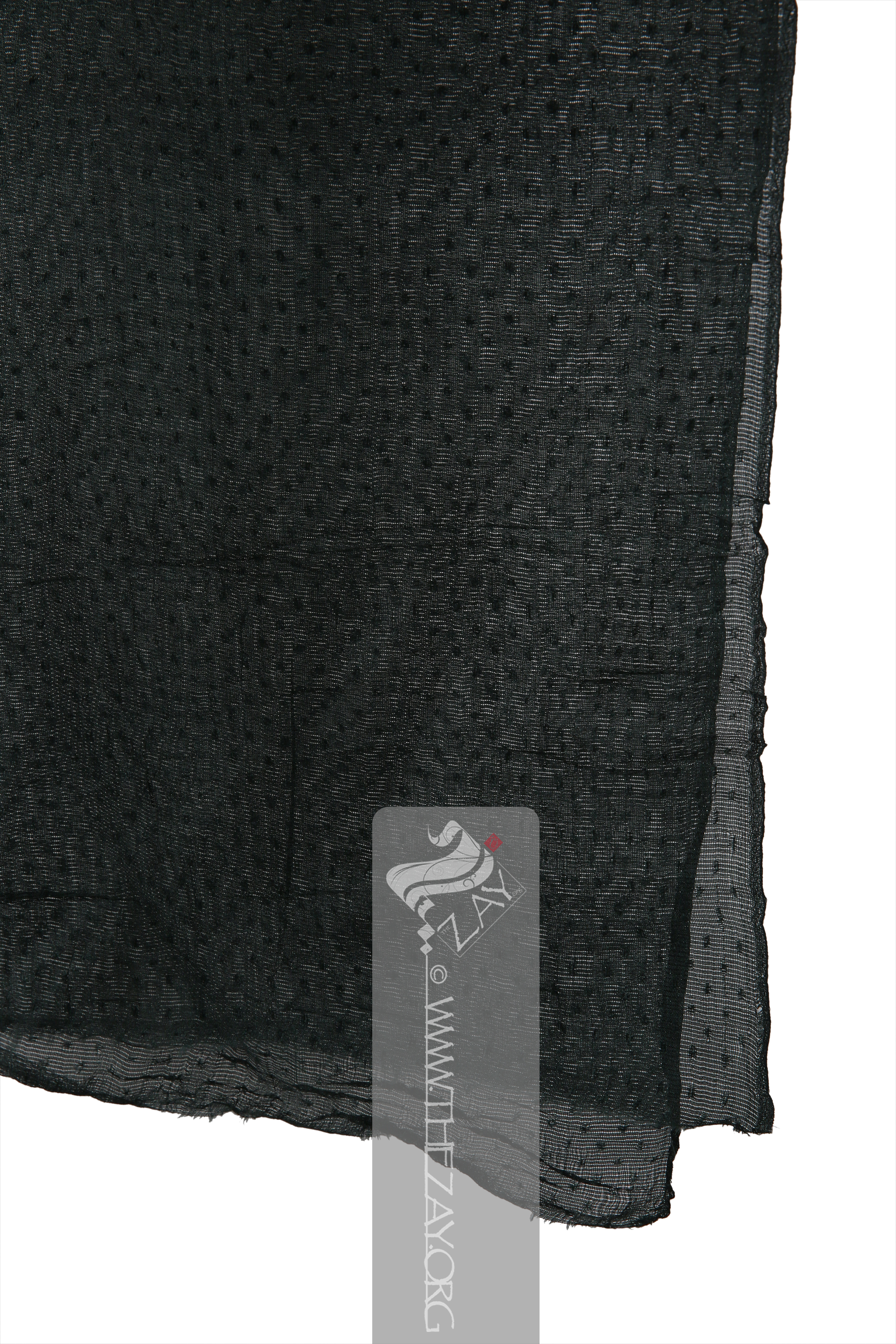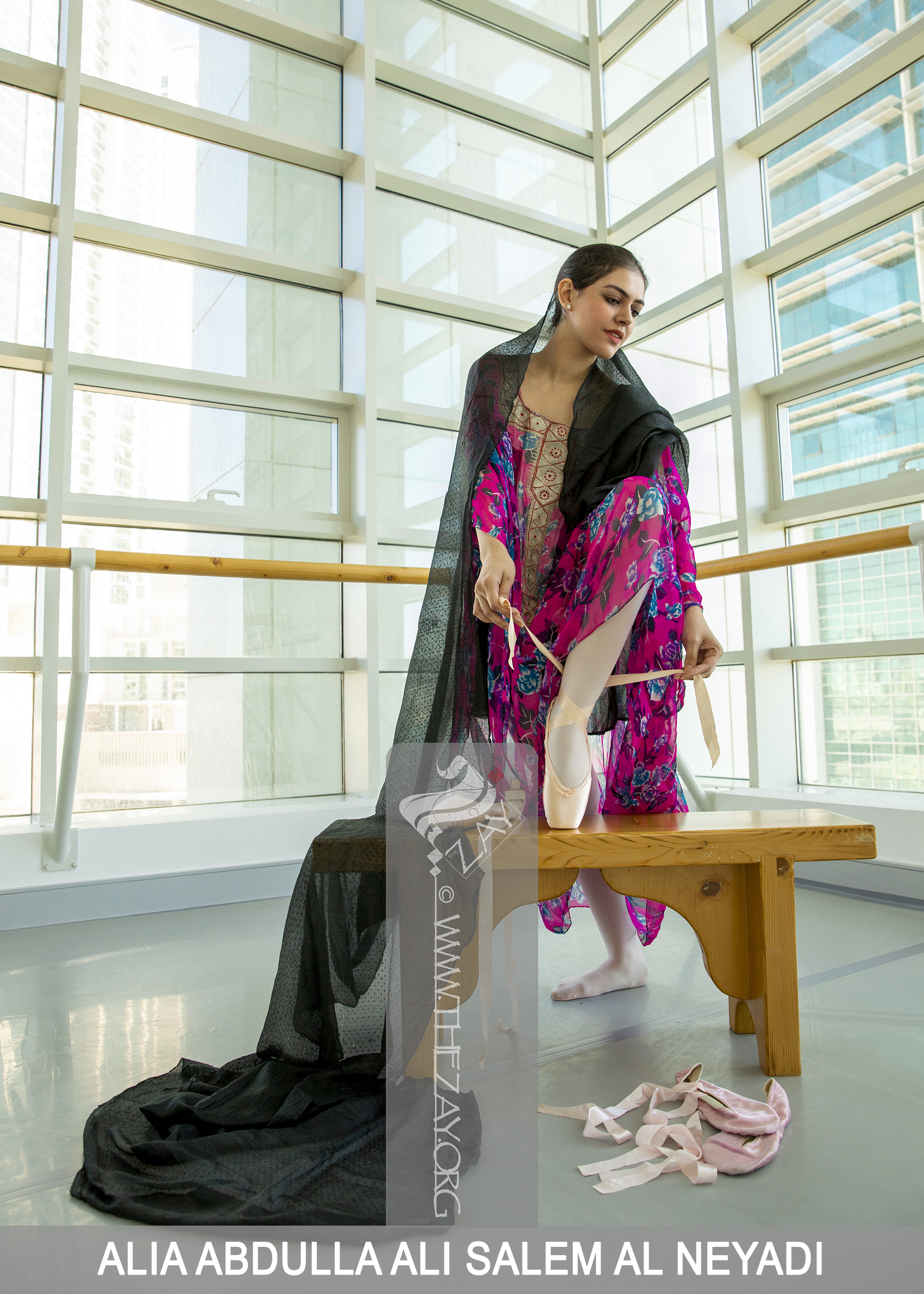Object History
When
Dr. Reem Tariq
Ṭariq: (Arabic; Synonym: tulle_bi_talli; talli; badla; khus_dozi ), series of small metal knots made on a woven net ground as embellishment. The term is commonly used in the Levant Arab region specifically in Lebanon.
el Mutwalli
Dr. Reem Tariq
Ṭariq: (Arabic; Synonym: tulle_bi_talli; talli; badla; khus_dozi ), series of small metal knots made on a woven net ground as embellishment. The term is commonly used in the Levant Arab region specifically in Lebanon.
el Mutwallī: Founder (CEO) of the Zay
Zay: (Arabic: costume, Pl. azyaā’), a set of clothes in a style typical of a particular country or historical period. Initiative, a public figure, speaker and author. An expert curator and consultant in Islamic art and architecture, interior design, historic costume, and UAE heritage. was studying for her Ph.D., she organised trips throughout the Emirates to meet different groups in order to collect data and samples. It was during one of these expeditions that she bought this head veil (
shaylah
Shaylah: (Colloquial Gulf Arabic), a length of fabric used as shawl
Shawl: (Persian: shāl from Hindi: duśālā – Shoulder Mantle), a shawl is a South Asian version of a scarf
Scarf: (English), usually a rectangular piece of cloth loosely worn over the shoulders, upper body and arms, and sometimes also over the head. worn or wrapped loosely over the shoulders and is usually made of wool. , head cover or veil. Also known as (wigāyah) or (milfa
Milfa’: (Arabic: to cover), shawl
Shawl: (Persian: shāl from Hindi: duśālā – Shoulder Mantle), a shawl is a South Asian version of a scarf
Scarf: (English), usually a rectangular piece of cloth loosely worn over the shoulders, upper body and arms, and sometimes also over the head. worn or wrapped loosely over the shoulders and is usually made of wool. or veil worn by women in the Arab Gulf regions and some areas of the Levant to cover the head.’), generally made from sheer fabrics such as tulle (tūr), cotton gauze (wasmah
Wasmah: (Arabic: woad), is derived from the woad herb (wasmah) used to dye the cotton gauze black. It is mainly used for headcovers or veils and overgarments in most of the Arab gulf region.) (nidwah) or (Nīl), or silk chiffon (sarī).) and a few other garments from a Dubai native, Khadijah Khalaf al Nasaj.
Khadijah,
Um
‘Um: (Arabic: mother), a sign of respect or formality, women are not addressed by their own names, rather as mother of, then adding the name of the eldest son as in Um Mohammed. Also can mean: with, for example (‘um mishakhiṣ) meaning with gold embellishment. Khalifah, born in the early 1950s, never attended any formal schooling. She married her paternal cousin at the age of 14 and bore 5 daughters and 4 sons.
Object FeaturesBasic synthetic veil
shaylah
Shaylah: (Colloquial Gulf Arabic), a length of fabric used as shawl
Shawl: (Persian: shāl from Hindi: duśālā – Shoulder Mantle), a shawl is a South Asian version of a scarf
Scarf: (English), usually a rectangular piece of cloth loosely worn over the shoulders, upper body and arms, and sometimes also over the head. worn or wrapped loosely over the shoulders and is usually made of wool. , head cover or veil. Also known as (wigāyah) or (milfa
Milfa’: (Arabic: to cover), shawl
Shawl: (Persian: shāl from Hindi: duśālā – Shoulder Mantle), a shawl is a South Asian version of a scarf
Scarf: (English), usually a rectangular piece of cloth loosely worn over the shoulders, upper body and arms, and sometimes also over the head. worn or wrapped loosely over the shoulders and is usually made of wool. or veil worn by women in the Arab Gulf regions and some areas of the Levant to cover the head.’), generally made from sheer fabrics such as tulle (tūr), cotton gauze (wasmah
Wasmah: (Arabic: woad), is derived from the woad herb (wasmah) used to dye the cotton gauze black. It is mainly used for headcovers or veils and overgarments in most of the Arab gulf region.) (nidwah) or (Nīl), or silk chiffon (sarī). is simply cut from a length of fabric measuring about four meters. The Point d'Esprit tulle (
tur
Tūr: (Arabised from French: tulle), refers to a net-like soft, fine silk, cotton, or nylon material, used for making veils and dresses. In colloquial Arabic the letter (L) is turned into (ra). ) is interspersed with seed-like dots that are created by small pin knots within the weave of the fabric, resulting in a polka dot effect. These small dotted motifs are called (
bu_nafah
Bū_nafah: (Arabic, bū: diminutive of abū: father, nafah: bethir: seeds, synonyms: bū_nūnah, naf_al _matar), a term colloquially used in the Arab Gulf region to identify mainly point d’Esprit tulle; shear net, adorned in small seed or pin like dots woven into the fabric. Used particularly for veils (shiyal) and overgarments (athwāb).) or (
bu_nunah
Bū_nūnah: (Arabic: bū: diminutive of abū: father, nūnah: naqdah
Naqdah: (Arabic: coins, synonyms: mnaghadah, naghdah, mnaghadah) Since silver was a form of currency, it came to refer to silver adorned garments. The term refers to articles decorated with silver (tallī) straw (khūs) in small coin-like dots. The (qāf) is pronounced (gha) colloquially., or nuqṭah: point or dot, synonyms: bū_nafah, naf_al _ maṭar), term colloquially used in the Arab Gulf region to identify mainly point d’Esprit tulle; shear net, adorned in small seed or pin like dots woven into the fabric. Used particularly for veils (shiyal) and overgarments (athwāb). ) in colloquial Arabic.
This fabric is generally draped off the head to cover most of the upper body portion. In earlier versions of these garments, the cut edge was often left to fray, but in later ones, as in this example, it is hemmed by hand with a basic running stitch.
A common public practice within the region is to pull down the top portion above the forehead concealing the whole face down to the chest line, or reversely hold one of the draped corners in both hands and flipping it up to cover the crown concealing the entire face, neck, and chest areas. This then renders the article a (
ghishwah
Ghishwah: (Arabic: ghashā: to cover), the term is applied to any sheer fabric such as shawl
Shawl: (Persian: shāl from Hindi: duśālā – Shoulder Mantle), a shawl is a South Asian version of a scarf
Scarf: (English), usually a rectangular piece of cloth loosely worn over the shoulders, upper body and arms, and sometimes also over the head. worn or wrapped loosely over the shoulders and is usually made of wool. , head scarf
Scarf: (English), usually a rectangular piece of cloth loosely worn over the shoulders, upper body and arms, and sometimes also over the head. or veil (shaylah) if draped off the head to conceal the face, in Arab gulf dialect.) form the verb to conceal. Both actions are carried out by women very swiftly, elegantly, and somewhat sensuously when any non-relative male crosses path unexpectedly.
Keywords:
wigayah
Wigāyah: (Arabic: verb waqa: to protect), the term is applied to any fabric that is draped off the head to cover the upper portion of the body thus used as shawl
Shawl: (Persian: shāl from Hindi: duśālā – Shoulder Mantle), a shawl is a South Asian version of a scarf
Scarf: (English), usually a rectangular piece of cloth loosely worn over the shoulders, upper body and arms, and sometimes also over the head. worn or wrapped loosely over the shoulders and is usually made of wool. , head scarf
Scarf: (English), usually a rectangular piece of cloth loosely worn over the shoulders, upper body and arms, and sometimes also over the head. or veil (shaylah). Some can have a fringe (hāshīyah). The letter (qāf) is commonly pronounced (guh) colloquially rendering the term: wigāyah. 








